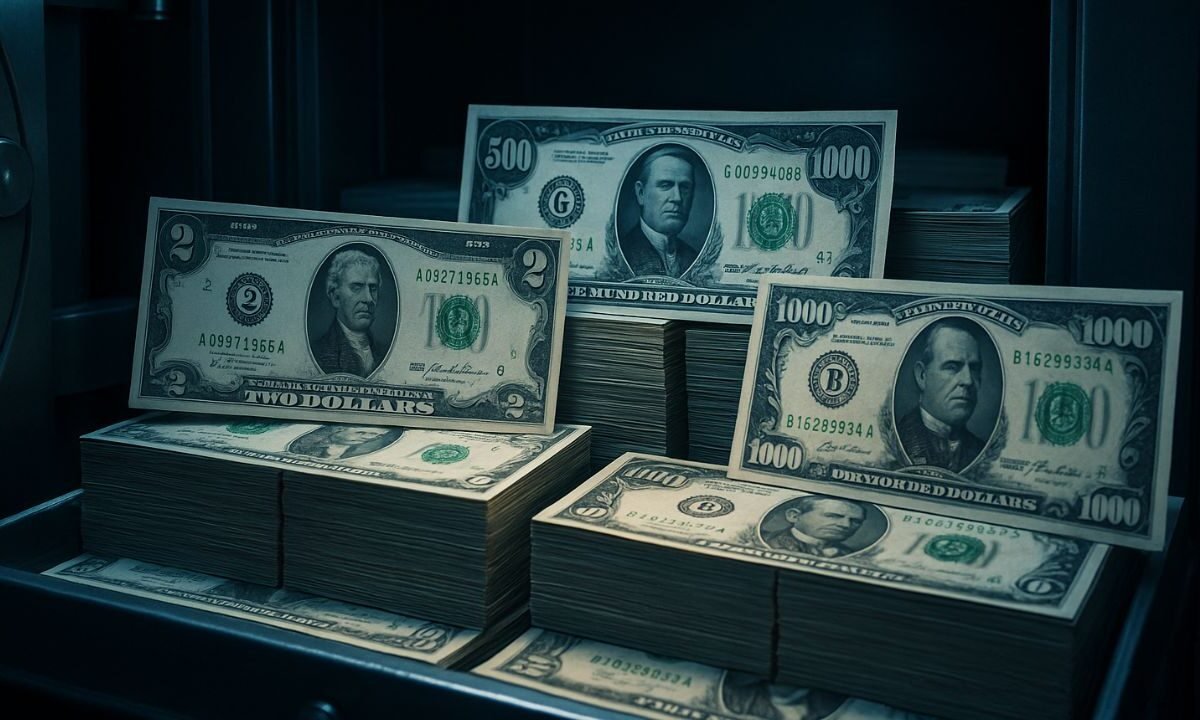A surprising number of U.S. paper bills can sell for thousands of dollars—not just antique notes, but modern $1 and $20 bills with the right traits.
From dramatic printing errors to rare serial numbers and legendary historic issues, here’s a clear, up-to-date guide to what makes paper money valuable and how much the best examples can bring.
Why Some Bills Are Worth a Fortune
Collectors pay premiums for three big reasons: rarity, demand, and condition (grade). Notes certified by grading services and with eye-catching errors or elite serials can jump from face value to four or five figures.
Famous trophy notes—like the 1890 “Grand Watermelon” $1,000 Treasury note—have sold for millions, a reminder that paper money can rival coins in value.
The Hottest Categories in 2025
1) Blockbuster Error Notes
The “King of Errors” is the double-denomination: a bill whose face and back are different denominations (e.g., a $20 back printed on a $10 front).
Certified examples have realised $24,000–$55,000+ at major auctions, and clean, high-grade notes routinely command five figures.
2) 2013B $1 Duplicate Serial-Number Star Notes
A rare misprint at one printing facility created duplicate serial numbers on Series 2013B $1 star notes (New York district). Matched pairs have sold from $9,300 up to $25,000 in a verified sale; top pairs can still fetch five figures as more are reunited.
3) Elite Serial Numbers (Modern Bills)
Serial patterns like ladders (01234567), solids (e.g., 77777777), radars (palindromes), and low numbers (00000001–00000100) are highly collectible. A ladder $20 recently brought $7,500; solid and radar notes can hit thousands in pristine condition.
4) Famous Historic Issues
Top-tier classics include the 1890 $1,000 “Grand Watermelon” Treasury Note—which sold for $3.29 million in 2014 (and over $2 million in 2018)—a reminder that trophy paper money still leads the market.
Quick Value Reference
| Category | What to Look For | Typical Value Range | Notable Results |
|---|---|---|---|
| Double-Denomination Error | Face/back are different denominations (e.g., $20/$10) | $10,000–$50,000+ | $24,000 and $55,200 recorded at major auctions |
| 2013B Star Note Pair | Two matching B★ notes (New York print) with identical serials | $5,000–$25,000+ | Verified matched pair sold $25,000 |
| Premium Serial Numbers | Ladders, solids, radars, low numbers | $200–$7,500+ (grade-dependent) | Ladder $20 sold $7,500 |
| Trophy Historic Notes | 19th-century Treasury/Gold/Silver notes, top grade & rarity | $50,000–$3,000,000+ | 1890 $1,000 “Grand Watermelon” hit $3.29 M |
Ranges vary significantly depending on condition (grade), rarity, and market timing.
How to Check Your Cash Like a Pro
- Scan Serial Numbers: Seek patterns (ladder/solid/radar), very low numbers, or star notes (★).
- Hunt 2013B Pairs: If you have a Series 2013B $1 star from New York (B…★), compare with public databases to find its twin; matched pairs bring thousands.
- Spot Errors: Misaligned prints, missing seals, double denominations, or inverted backs—certify any suspected error before selling.
- Sell Strategically: For four- and five-figure pieces, consider auction houses specialising in paper money to maximise visibility and bids.
- Grade It: Third-party certification (e.g., PMG/PCGS-equivalent) often boosts confidence and price, especially for high-value notes.
The world of rare U.S. paper money isn’t just for museums—even modern notes in your wallet could be worth hundreds to tens of thousands thanks to printing errors and special serial numbers.
Whether you’re checking random change or scanning your stash, know that some everyday bills hold hidden value. With smart screening and the right sale venue, an ordinary-looking bill might turn into an extraordinary payday.
FAQs
Are star notes always valuable?
Not automatically. Star notes replace damaged sheets, so they’re scarcer, but only unusual serials, high grades, or special runs bring four- or five-figure prices.
How rare are 2013B duplicate star notes really?
Although millions of 2013B star notes were printed, true matched pairs are elusive and documented pairs have sold up to $25,000. Many potential matches remain unfound.
Which error note brings the biggest money?
Spectacular errors like double-denomination notes are among the most desirable and can sell for $20,000–$50,000+, depending on grade and eye appeal.

